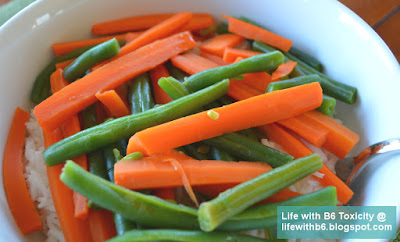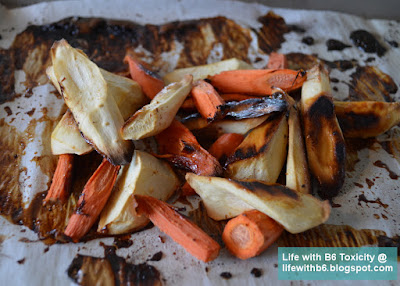This is one of my all-time favorite dishes. And that's saying a lot, considering how low it is in B6. I often double the recipe so I have enough to last for several days.
Salad ingredients
- 1 cup red cabbage, shredded
- 1/3 cup cilantro leaves
- 1 teaspoon fresh lime juice
- 1/4 cup onion, thinly sliced or chopped
- 1/2 teaspoon salt
- 1 cup cucumber, thinly sliced
- 1/2 cup red bell pepper, thinly sliced and diced
- pinch of salt
- 1/2 cup almond butter (harder to find than peanut butter, but much lower in B6)
- 1/2 tablespoon fresh ginger, finely grated
- 2 garlic cloves
- 2 tablespoons fresh lemon juice
- 2 tablespoons maple syrup
- 1 tablespoon chili sauce
- 1 tablespoon soy sauce
- 1/4 cup water
- pinch of salt and pepper
2. Meanwhile, combine all the sauce ingredients in a blender and blend until smooth, adding more water if needed.
3. Add the remaining salad ingredients to the cabbage mixture (onion, cucumber, bell pepper) and toss.
4. Serve over Asian rice noodles (sometimes called rice sticks or rice vermicelli), or over white rice. When you store the leftovers, keep the sauce and salad in separate containers.






